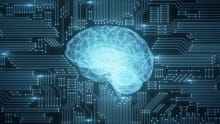Real-time learning: How L&D can drive change
Get Set Learn Read similar articles

As the conversation to cement remote work into permanent working arrangements gains momentum across the globe, organizations must be ready to make radical changes in how they function. An important aspect of this change will be how leaders enable effective learning across the organization. We take a closer look at how learning practitioners can drive this change.
The current decade will witness significant changes in how we work and live owing to the advancements made in automation, digitization, big data analytics, cybersecurity, and machine learning. These technologies will change the way industries like IT, healthcare, energy, transportation, and entertainment interact with their customers. The COVID-19 pandemic has bolstered the speed of adoption of these new-age technologies. As a result, we are likely to witness the following broad disruptions and challenges over the coming two decades:
- Shifting economic power: The increasing power yielded by developing nations and the emerging markets that they contain will reorient the existing economic influence exerted by Western countries. An estimated 2.4 billion individuals are expected to become a part of the middle class only in South Asian nations by 2030, which means a change in global consumption patterns.
- Accelerating technological change: We are already in the midst of rapid technological change to businesses and entire industries. These changes will redesign how we interact with each other, our workplaces, and companies worldwide. The expansion of digital services, which have primarily been in the e-commerce and entertainment industries, will now force other traditional businesses to change. The corporate and social sector is also adequately adapting to these new realities.
- An aging population: Significant portions of populations in many countries will leave the workforce and require support. Many nations will see the aging generation overtaking the younger one, thus, overwhelming their economic and social systems. In other words, the demographic dividend of countries will become a new form of power and currency across the world.
- System-wide transformation: Along with the above changes, the very foundation of what constitutes an organization will change. The average tenure of companies will decline (but that of startups will increase), and the role they play in people’s lives will change. Individuals will not be able to obtain employment security by working in one organization for extended periods, and the very concept of fixed and full-time employment might change. Flatter and matrix-based structures in organizations will change the terms of employment, and a majority of people might have to work as consultants or gig workers for multiple companies.
In this context, the skills and demands that organizations have from people will also change. Like we have witnessed over the past few months, the focus will continue to be on extreme longevity, globally-connected collaborations, new media ecology, and integrating digital tools with our processes.
These transformations will require individuals to be skilled in an interdisciplinary approach, as the concept of being a single-domain expert will become obsolete. This will give precedence to the ability to integrate learning experiences and expertise with its application and using a design mindset to build user-centric solutions and interventions. Naturally, skills like critical thinking, advanced problem solving, analytical reasoning, and cognitive and social competence will be essential as well.
How L&D needs to recalibrate:
In order to help the business world navigate these challenges, L&D leaders and practitioners will have to relook at who their learners are, what their preferences are, how the organizational structure looks like, and how they can help the overall business evolve. Until now, the L&D function has been the custodian of learning while operating as a separate entity within the company; in the future, these structures will become decentralized.
In other words, L&D leaders must help their organizations identify the challenges they are facing and ascertain their own contribution in solving them. This might require us to redesign the fundamental concepts of L&D; for example, would RoI be the best metric to measure, and if not, then how do we measure success?
Some of the key L&D priorities that were highlighted in a recent Skillsoft study indicate that the average working professional realizes the importance of skill-building. The survey showed that L&D leaders, learners, and professionals consider preparing for the future to be a top priority. However, challenges like lack of relevant metrics and data-driven insights and a disconnect between the L&D interventions and the company’s overall strategy continue to create obstacles.
Keeping up with changing times
As we progress from being connected to the internet to actually experiencing new things (with new technologies like virtual reality), our understanding of what constitutes learning must also change. For instance, think back to a few years ago and list down the most important features you would have considered while purchasing a car. Now, compare them to your current expectations, and notice that things like design, emissions, electric hybrid ability, BS IV-compliance, and other modern features are also added to the list. This simply indicates that what constitutes a good driving experience has evolved over the years.
Similarly, L&D practitioners must understand that the learning product or experience that they curate for employees must go beyond being affordable, acceptable, and engaging. All these should be a given, without a doubt, and the packaging, perception, and control of the learning experience must also be given careful consideration. To put it in simpler terms, we must take care of how satisfying and fulfilling the learning experience is.
In the same line of thought, it is crucial to recognize that L&D is no longer just another business function but plays a vital techno-commercial role in the overarching goals. This means that they must be cognizant of the rate of changing tools and technologies and ensure that their workforce stays ahead of the curve. This will require the L&D function to go beyond curating learning products but actually sustaining them by balancing the push and pull that their learner experience and making learning aspirations for them. Thus, L&D leaders must not simply be strategy enablers but accelerators for company goals and strategies.
L&D: Taking on a bigger mandate
To ensure that businesses are able to surf the waves of disruption, L&D has to take on the bigger mandate that goes beyond training. It must help employees, leaders, and organizations, on the whole, grow and adapt. L&D must inculcate a sense of urgency and ownership in the workforce and leaders to push for far-reaching and sustainable changes in organizational learning. By providing structured, digital, collaborative, and career-based learning programs, L&D professionals help enhance both individual and organizational capability. Furthermore, they must keep in mind their contribution to nation-building, skilling, and employment generation.
To conclude, the L&D function needs to help transform individual learning into organizational learning, and thereby accelerate the overarching business strategy and capability. The answer lies in building on the strengths of existing learning systems and continually evolving to integrate new learning approaches in the workplace.
(This article is based on the Webcast “Real-time Leader: Leadership development strategy based on what employees expect” by Sampada Inamdar, VP and Chief Learning Officer, Anand Group India)





